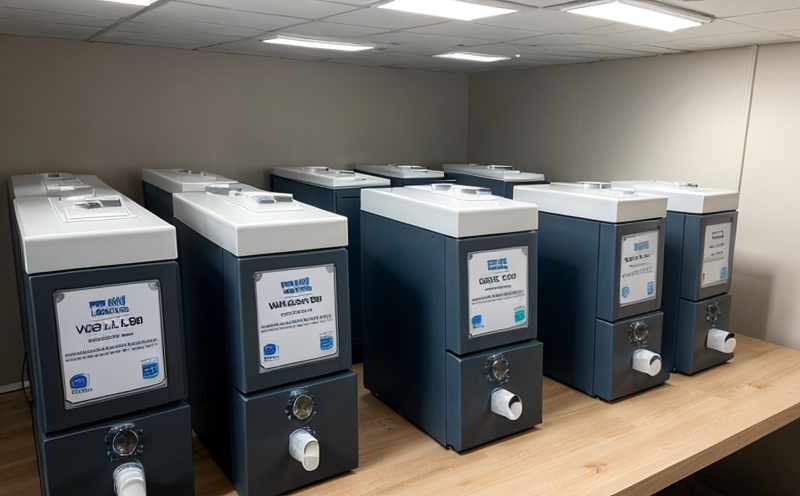VOC release monitoring of industrial protective fabrics
Formaldehyde and volatile organic compounds (VOCs) are significant considerations in the testing of industrial protective fabrics. These materials, often used for enhanced safety in harsh environments, must meet strict standards to ensure worker health and well-being. VOC release is a critical parameter that assesses the volatility of chemicals emitted by these fabrics over time.
The process involves analyzing fabric specimens under controlled conditions to determine the rate at which volatile compounds are released into the environment. This testing is crucial for compliance with international standards such as ISO 16000-9 and ASTM D3968, both of which provide guidelines on measuring VOC emissions from textiles.
In industrial settings, prolonged exposure to high levels of formaldehyde and VOCs can lead to respiratory issues, skin irritation, and other health problems. Therefore, ensuring the safe use of protective fabrics is paramount. This service focuses on monitoring the release of these compounds during normal wear conditions, providing critical data for product safety and regulatory compliance.
The testing procedure involves preparing fabric samples according to ISO 16000-9, which specifies methods for sampling and analysis. The samples are then subjected to a controlled environment where VOCs are collected over time using adsorbent tubes or thermal desorption systems. These collected compounds are analyzed via gas chromatography-mass spectrometry (GC-MS) to identify and quantify the specific VOCs present.
The results provide insights into the potential risks associated with prolonged exposure, allowing manufacturers to make informed decisions about fabric formulations and processing techniques. This service is particularly valuable for companies developing new products or seeking to comply with emerging regulations in countries like China and the European Union.
Understanding the VOC release profile of industrial protective fabrics aids in optimizing product performance while minimizing health risks. By leveraging this testing, manufacturers can ensure their products meet stringent safety standards, enhance worker protection, and maintain a competitive edge in the market.
Why It Matters
The importance of VOC release monitoring cannot be overstated, especially for industrial protective fabrics. These textiles are designed to protect workers from hazardous environments but must not compromise their health through the very materials meant to safeguard them.
- Health Risks: Exposure to high levels of formaldehyde and VOCs can lead to respiratory issues, skin irritation, and other health problems. Ensuring low emissions is critical for worker safety.
- Regulatory Compliance: Many countries have stringent regulations regarding the emission limits of these compounds in textiles. Failure to comply can result in fines and legal action.
- Product Reputation: A reputation for producing safe, compliant products can significantly enhance a company's brand image and customer trust.
The monitoring process is not just about meeting standards; it’s about understanding the real-world impact of fabric use. By providing precise data on VOC release rates, this service helps manufacturers make informed decisions that balance performance with safety.
Benefits
The benefits of VOC release monitoring are multifaceted and extend beyond mere compliance. This service offers several advantages to organizations in the textile industry:
- Predictive Insights: Understanding the potential risks associated with fabric use allows for proactive measures to mitigate these risks.
- Informed Decision-Making: Data-driven insights help manufacturers optimize product formulations and processing techniques, leading to safer products.
- Enhanced Reputation: Demonstrating a commitment to worker safety can significantly enhance a company’s reputation and customer trust.
- Competitive Advantage: By ensuring compliance with the latest standards, companies can differentiate themselves in a crowded market.
Industry Applications
This service is particularly relevant for industries where workers are exposed to hazardous environments. Below is a table summarizing key applications and the specific benefits they derive from VOC release monitoring:
| Industry Sector | Specific Applications | Benefits of Monitoring |
|---|---|---|
| Hazardous Waste Management | Monitoring protective suits used in hazardous waste disposal. | Evaluates the risk of VOC emissions during handling and transport. |
| Mining Operations | Assessing the safety of workers wearing protective gear underground. | Determines the potential for respiratory issues due to prolonged exposure. |
| Construction Sites | Evaluating protective clothing used in high-VOC environments like chemical plants. | Identifies risks associated with prolonged exposure to VOCs. |





